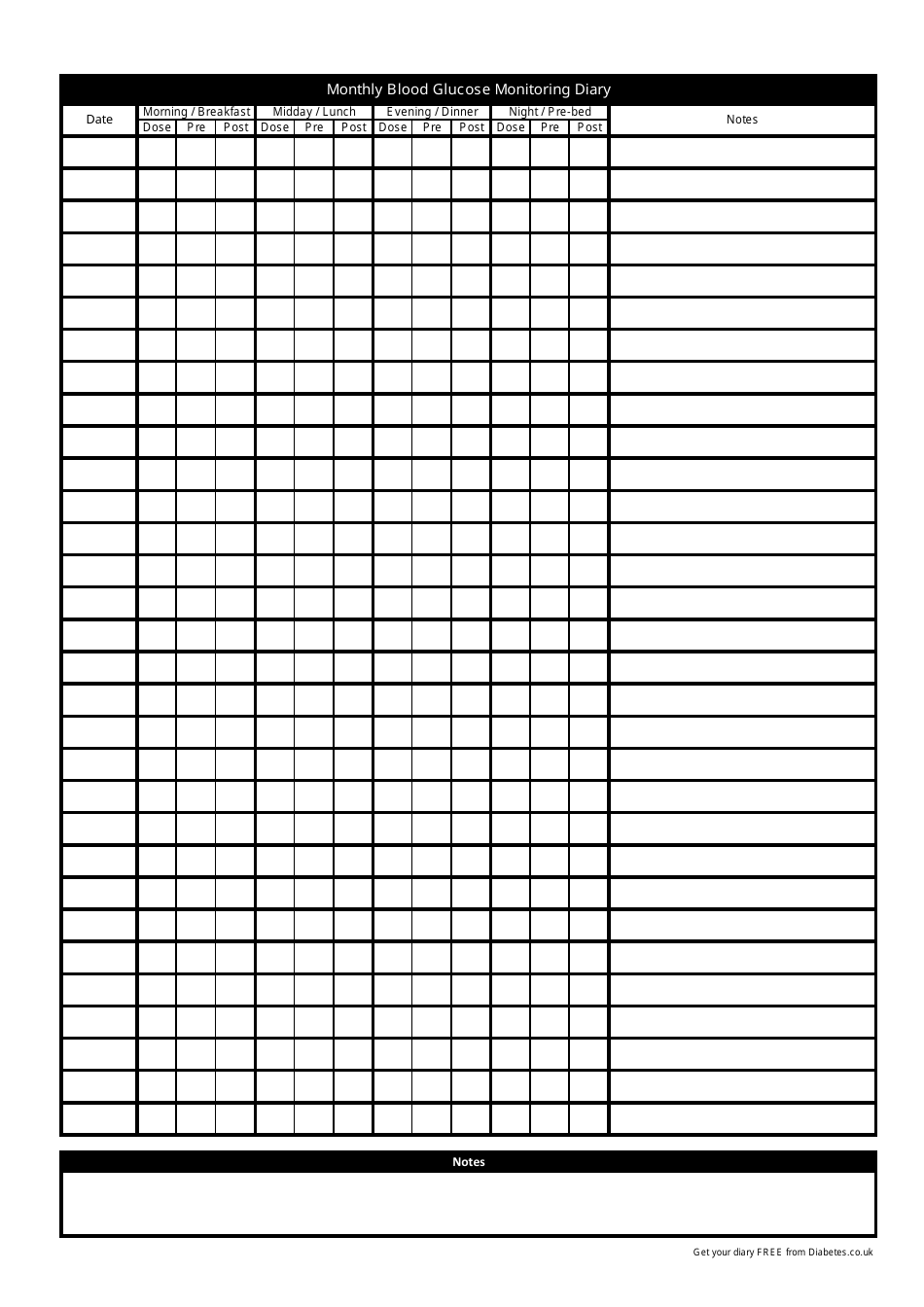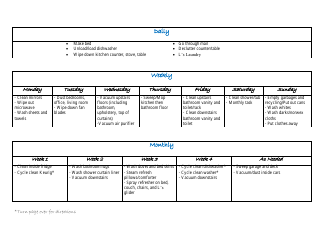Monthly Blood Glucose Monitoring Diary
A Monthly Blood Glucose Monitoring Diary is used by individuals with diabetes to track their blood sugar levels over the course of a month. This monitoring allows these individuals and their healthcare providers to observe trends, adjust insulin doses or oral medications, and manage diet and exercise plans. Keeping consistent records of blood glucose levels can help identify factors contributing to fluctuating blood sugar levels, thereby assisting in more effective management of diabetes. Additionally, the diary can serve as a tangible record during healthcare visits to provide accurate information to practitioners.
The Monthly Blood Glucose Monitoring Diary is typically filed by individuals who have diabetes. They use this diary to keep track of their blood sugar levels throughout the month. Recording these levels is essential for managing diabetes effectively, as it helps both the individual and their healthcare provider understand how their diet, exercise, medication, and lifestyle affect their blood sugar. The data collected can then be used to make any necessary adjustments to the person's diabetes management plan. Different countries like USA, Canada, India, and Australia may have different systems in place, but the premise is typically the same globally.
FAQ
Q: What is a Monthly Blood Glucose Monitoring Diary?
A: A Monthly Blood Glucose Monitoring Diary is a document where individuals with diabetes record their blood sugar levels over the course of a month. This helps in tracking how their body responds to food, exercise, medication, and other factors, and in managing their condition effectively.
Q: Who should use a Monthly Blood Glucose Monitoring Diary?
A: Individuals diagnosed with diabetes, particularly Type 1 and Type 2, should use a Monthly Blood Glucose Monitoring Diary. It can also be useful for people with gestational diabetes.
Q: How to use a Monthly Blood Glucose Monitoring Diary?
A: To use the diary, you record your blood glucose levels at different times of the day, typically before meals and at bedtime. You also note any factors that may affect your levels, such as exercise, stress, or illness. Reviewing this information with your healthcare provider can help adjust your diabetes management plan if needed.
Q: What is the importance of using a Monthly Blood Glucose Monitoring Diary?
A: Regular use of a Monthly Blood Glucose Monitoring Diary can help in understanding patterns or trends in blood glucose fluctuations. It helps healthcare providers make informed decisions about diet, physical activities, and treatments.
Q: What should be included in a Monthly Blood Glucose Monitoring Diary?
A: A Monthly Blood Glucose Monitoring Diary should include the date, time, blood sugar level readings, insulin dose (if applicable), notes on food intake, physical activity, any comments about how you were feeling or unusual circumstances (like stress or illness), and any changes in medication.





















